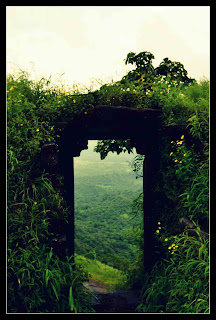The
bringing of the art of the terrarium is generally credited with a man called Dr.Nathaniel Bagshaw Ward, a London surgeon and gardening enthusiast. This came about with
the publishing of his book called "On the Growth of Plants in Closely
Glazed Cases" which he published in 1842.
 He had
the desire to watch an insect chrysalis transform into an insect so he placed
it, along with some mold in a capped wide-mouthed glass bottle. He observed
this bottle on a regular basis and noted how, because of the sun, moisture
would be drawn to the top of the bottle during the day then circulate back down
to the mold and soil in the evening. But his big surprise came when quite
unexpectedly a seedling fern and a sprout of grass bloomed inside the bottle.
He was very surprised by this because he had been unsuccessfully trying to grow
these very things in his garden. He had surmised that pollution from local
factories had been hostile to the plants and was killing them. This made him
believe that the plants were doing well in his little bottle because they were
sealed off from outside influences and protected from contaminants. He placed
this bottle outside the window of his study and the plants inside continued to
thrive for four years with no watering or outside intervention at all! From
this he devised further experiments and thus his pursuit, and the science of
the terrariums, was born. For a very long time these small glass enclosures
were named Wardian Cases after him and even though the term is still in use
today it is generally not well known and we just call them terrariums.
He had
the desire to watch an insect chrysalis transform into an insect so he placed
it, along with some mold in a capped wide-mouthed glass bottle. He observed
this bottle on a regular basis and noted how, because of the sun, moisture
would be drawn to the top of the bottle during the day then circulate back down
to the mold and soil in the evening. But his big surprise came when quite
unexpectedly a seedling fern and a sprout of grass bloomed inside the bottle.
He was very surprised by this because he had been unsuccessfully trying to grow
these very things in his garden. He had surmised that pollution from local
factories had been hostile to the plants and was killing them. This made him
believe that the plants were doing well in his little bottle because they were
sealed off from outside influences and protected from contaminants. He placed
this bottle outside the window of his study and the plants inside continued to
thrive for four years with no watering or outside intervention at all! From
this he devised further experiments and thus his pursuit, and the science of
the terrariums, was born. For a very long time these small glass enclosures
were named Wardian Cases after him and even though the term is still in use
today it is generally not well known and we just call them terrariums.
At the
Great Exhibition of 1851, Ward displayed a bottle containing a fern and mosses
that had not been watered for 18 years. The Wardian case unleashed a revolution
in the mobility of commercially important plants. In Wardian cases, Robert
Fortune shipped to British India, 20,000 tea plants smuggled out of Shanghai,
China, to begin the tea plantations of Assam.Ward's terrariums also became
popular for growing the plants, and it became, in various guises, almost a
domestic necessity. The poor had to content themselves with inexpensive
rudimentary versions, but there were no limits for the rich. Wardian cases grew
into miniature Taj Mahals and Brighton Pavilions, perfect vehicles for the
contemporary love of elaborate ornamentation as well as living plants. The
Wardian case was fashionable in the United States in the early 1860s, and
hardly a self-respecting Victorian household was without one. Even though
history dates back terrariums to the 18th century, it is still a
comparatively unknown art form in India.


